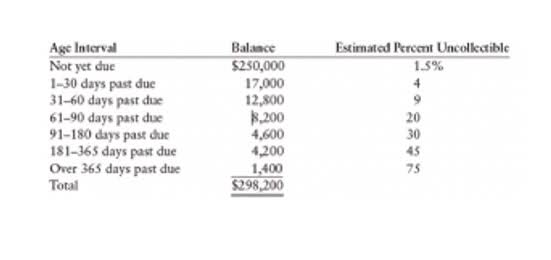
You should get confirmation of the shipping schedule and loading arrangements from the supplier. As such, in EXW, maximum responsibility is vested with the buyer, though in FOB, liability is partially placed on the seller until goods are laden in a shipping vessel. The seller stays liable for any damage that may occur or loss at a transit level. The seller Online Accounting has Cost Responsibility for freight and insurance in this regard. In FOB destination the seller will transfer goods and ownership at your designated destination.
What is the difference between FOB Origin and FOB Destination?
There can, in practice, however, be agreed exceptions, such as when the buyer provides the seller with labels, logos, or similar. In practice, it is often the seller who will arrange with the buyer that the proof is an “on board” bill of lading showing the seller as the shipper/consignor. Alternatively, it can be a simple mate’s receipt issued by the vessel’s master. Under FOB, the seller (at its own cost) must provide the buyer with the usual proof that the goods have been delivered in accordance with A2. The seller will most likely require at least a mate’s receipt or some other form of evidence of export (such as a copy of the bill of lading) for their VAT/GST purposes.
- After reading this, you can make the correct decision regarding shipping and sourcing.
- You can take control of shipping routes and methods by selecting FOB origin.
- The history of “Freight On Board” (FOB) as a concept in international trade can be traced back many centuries, and it has evolved to become a widely accepted and standardised term.
- FOB shipping point transfers the goods to the buyer at the point the goods are loaded into the truck or the shipping point.
- With the release of Incoterms 2020, FOB remains mostly unchanged compared to previous versions.
Pro Tip: Align FOB Terms With Your Shipping Strategy
It indicates the point at which the costs and risks of shipped goods shift from the seller to the buyer. FOB Destination has specific accounting implications for both the buyer and the seller. For the seller, the sale is not recorded until the goods are delivered to the buyer’s destination. This delay in revenue recognition can impact the seller’s cash flow and financial reporting, as the income shipping point from the sale is not realized until the delivery is complete. The shipper will generally register a sale as soon as cargo leaves its shipping pier, irrespective of the delivery conditions.

Can FOB Terms Impact Revenue Recognition?

We’re ready to help you achieve your shipping goals with our services, which include international exporting as well as freight shipping, auto Bookkeeping vs. Accounting transport and agriculture equipment. They’re also responsible for loading the goods, transporting them and everything else needed to get them to their final destination. Another type of shipping agreement is called Cost, Insurance and Freight (CIF).

FOB Destination vs. FOB Shipping Point: Key Differences
That physical threshold worked when most goods were breakbulk and manually loaded. On the other side, U.S.-based importers gain the ability to control the rest of the logistics chain from vessel booking to inland delivery. The term also sees heavy use in large-scale commodity trades, like raw materials or bulk chemicals, where sellers deliver to a designated port and buyers want control of the ocean freight leg.

Costs Associated with Freight on Board
It means the seller’s responsibility is to deliver the goods onto the ship at the agreed port of shipment. Once the goods are loaded on board, the risk shifts from the seller to the buyer. This term clearly defines who handles costs and risks at each step, making it vital for smooth trade. FOB Incoterms, or Free On Board, define the point at which the risk transfers from the seller to the buyer during the shipping process. It is a common shipping term used in international trade, especially for sea or inland waterway transport. Any costs related to freight, insurance, unloading, and further inland transportation fall on the buyer.
- When developing any business agreement, to avoid a dispute, the buyer should seek to specify in the contract of sale what costs will be borne by the seller and what costs fall on the buyer.
- The term “freight on board” originated from the days of sailing ships when goods were “passed over the rail by hand,” as defined in Incoterm.
- This example highlights the clear division of risk and costs in FOB contracts—making it a useful term when parties want to split responsibilities at the ship’s rail.
- It’s an agreement between the buyer and seller that specifies when the ownership and liability for the goods being shipped transfer from the seller to the buyer.
- The term is applicable for maritime and inland waterway transport only but NOT for multi-modal sea transport in containers.
- Here is where ownership and risk transfer take place for FOB Origin contracts.
There are various types of FOB, and each has its rules on ownership, risk, and responsibilities. For well over 100 years, the word “fob” has been used to denote little items you would clip onto your person, whether they were electronic or not. The word originally entered the English language in either the 18th or 19th centuries, and was originally related to pocket watches.
- If you look at a quotation, you will usually see the unit price, FOB as the Incoterm, and a Chinese city, the shipping point.
- Both come with a different set of responsibilities, and you can negotiate for better pricing and more control over shipment.
- At the same time, FOB has become an important logistics term because it helps determine the shipping cost.
- At uShip, we make LTL freight shipping simple, cost-effective, and transparent—helping businesses navigate FOB terms with confidence.
- Who is responsible for damages, fees, and costs at the various points along transit?
- Understanding the shipping process is crucial in FOB agreements, as it highlights the stages and responsibilities involved in transferring goods from seller to buyer.
Responsibilities and Obligations under FOB
- But before deciding at what point you would take ownership of the Origin or Destination.
- Due to agreed FOB shipping point terms, they’ll have no recourse to ask the seller for reimbursement.
- This Incoterm is particularly suitable for bulk cargo, non-containerized shipments, and conventional sea freight operations, where clear division of duties is essential.
- Furthermore, once the goods leave the port of origin, the seller has limited control over the shipment and may face delays during transit.
- Risk and responsibility are transferred to the buyer once the goods have crossed the ship’s rail.
- Only when the purchase arrives in perfect condition does the buyer accept it and consider the sale officially complete.
- If you are shipping a full container load (FCL), the truck will carry the container to the seller’s warehouse, and the seller will load the cargo directly into the container.
Platforms like Flexport offer integrated logistics management services that can streamline FOB point operations. According to the International Chamber of Commerce (ICC) standard trade definitions known as Incoterms, FOB means Free on Board. In 2010, the ICC altered the definition to state the seller must load the goods on board the vessel nominated by the buyer. One distributor receives many shipments from various vendors on a daily basis. The policy on this company’s dock is that personnel refuse any order that has the slightest sign of damage. The hassle involved with filing a claim or ordering replacement parts for potential damages motivates this blanket policy to refuse these shipments.
